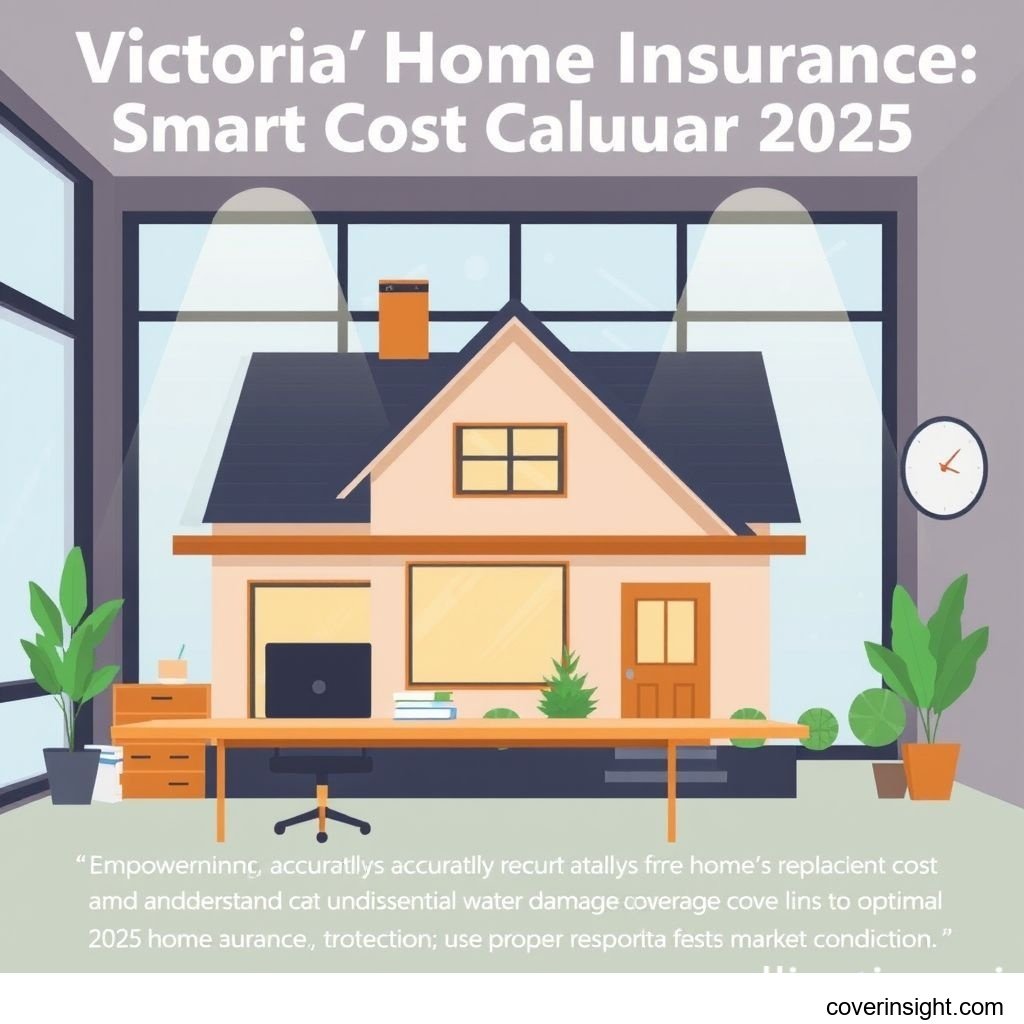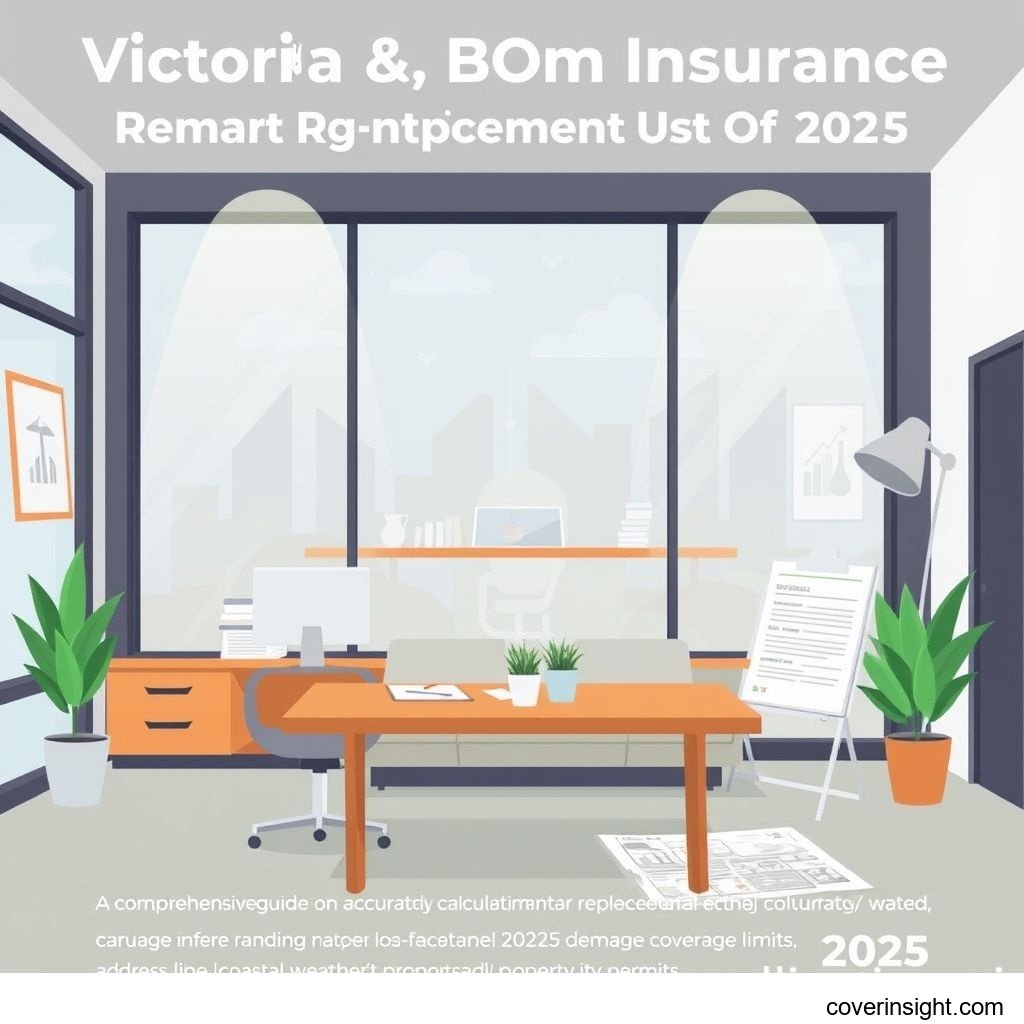Victoria BC Home Insurance: Smart Cost Calculator 2025
Introduction
As we head into 2025, understanding your home's true value for insurance purposes has never been more critical, especially in a dynamic market like Victoria, BC. The traditional methods of estimating replacement costs are evolving, with advanced tools and replacement cost calculators becoming indispensable for homeowners across Canada. These calculators offer a nuanced approach, factoring in specific regional building costs, labour, and materials, ensuring you don't find yourself underinsured should disaster strike. For Victoria homeowners, leveraging a sophisticated Smart Cost Calculator 2025 is not just about getting a quote; it's about securing peace of mind by accurately reflecting what it would genuinely cost to rebuild your home from the ground up, tailored to the unique economic landscape of British Columbia.
Coverage Details
Navigating the intricacies of home insurance can feel like deciphering a foreign language, but understanding what’s typically covered and what isn’t is paramount.
What’s Included
A standard home insurance policy in Victoria generally provides comprehensive protection. This usually encompasses the dwelling itself – covering the structure of your home, including attached garages, decks, and sheds. Beyond the bricks and mortar, contents coverage safeguards your personal belongings inside the home, from furniture to electronics and clothing. Personal liability is another cornerstone, protecting you financially if someone is injured on your property or you accidentally cause damage to someone else’s property. Furthermore, additional living expenses coverage is a lifesaver, covering costs like hotel stays and meals if you’re forced out of your home due due to an insured peril. Many policies also include specific coverage for perils like fire, theft, vandalism, and certain types of water damage.
Common Exclusions
While robust, home insurance policies aren't a blanket solution for every potential mishap. Common exclusions often include damage from flooding (especially overland flood, which may require a separate endorsement), earthquake (often a standalone option given Victoria’s seismic activity), and damage from sewer backup (also frequently an add-on). Gradual deterioration, wear and tear, and issues arising from a lack of maintenance are typically not covered. Acts of war or terrorism are also standard exclusions. It's crucial to review your policy thoroughly or chat with your broker to understand these limitations and explore available endorsements that might plug specific gaps.
Cost Analysis
The price tag on your Victoria home insurance policy isn't pulled out of thin air. Several factors come into play, and understanding them can empower you to make smarter financial decisions.
Price Factors
Firstly, your location within Victoria significantly impacts premiums. Proximity to fire hydrants and fire halls, for instance, can lead to lower rates. The age and construction type of your home also weigh heavily; older homes with outdated wiring or plumbing might face higher costs, while brick or concrete structures are often seen as less risky than wood frames. Your claims history is another big one – a history of frequent claims can signal higher risk to insurers. The deductible you choose plays a direct role: a higher deductible means you pay more out-of-pocket for a claim but enjoy lower monthly premiums. Finally, while not always a primary factor, local economic conditions, building material costs (which have seen notable fluctuations in BC, sometimes causing delays and cost overruns on projects), and the overall claims landscape in British Columbia all contribute to the final price. For instance, data from the Insurance Bureau of Canada (IBC) frequently points to the rising costs associated with natural disasters in British Columbia, which invariably impacts overall premiums for homeowners.
Saving Tips
Want to lighten the load on your wallet without compromising essential coverage? Start by considering a higher deductible. It's a calculated risk that can significantly reduce your premium. Bundling your home and auto insurance with the same provider often unlocks substantial multi-policy discounts. Installing security systems, smoke detectors, and carbon monoxide detectors can not only keep your family safe but also earn you discounts. Regular home maintenance, addressing small issues before they become major claims, can also keep your claims history clean. Don't forget to ask about loyalty discounts if you've been with the same insurer for years, or mortgage-free discounts once you've paid off your home. It’s always a good idea to shop around and get multiple quotes, perhaps even exploring resources like Insurance Resources Global or CA Insurance Home for broader insights.
One real-world example highlighting the importance of a good calculator and proactive measures comes from a homeowner in Fairfield, Victoria. After a minor basement flood caused by heavy rainfall, they used a detailed replacement cost calculator to re-evaluate their coverage. They discovered they were underinsured for their finished basement's rebuilding costs and also learned about specific rebates from the City of Victoria for installing backflow preventers, which not only reduced their risk but also qualified them for a minor discount on their flood endorsement. It just goes to show, a bit of homework can really pay off!
FAQs
How much do replacement cost calculators cost?
Generally, replacement cost calculators provided by insurance companies or reputable third-party real estate websites are free to use. Their purpose is to help you accurately determine your home's rebuilding value, which directly informs the dwelling coverage amount needed.
What affects premiums?
Premiums are influenced by a multitude of factors, including the home's location, age, construction type, claim history, chosen deductible, and specific perils you wish to cover (e.g., adding earthquake or overland flood). Regional risk assessments, like Victoria's susceptibility to seismic activity, also play a role.
Is it mandatory?
While home insurance itself is not legally mandatory in British Columbia, most mortgage lenders require you to have adequate coverage as a condition of your loan. Essentially, if you have a mortgage, you'll need insurance. Even without a mortgage, going without coverage is akin to playing with fire – a risk too big for most.
How to choose?
Choosing the right policy involves more than just picking the cheapest option. Look for comprehensive coverage that meets your specific needs, consider the insurer's reputation for claims handling, and ensure the policy's limits genuinely reflect your home's replacement cost. Utilize the Smart Cost Calculator 2025 to ensure your dwelling coverage is spot on, and don't hesitate to consult with an experienced local broker who understands the Victoria market. The Financial Consumer Agency of Canada (FCAC) provides valuable insights into choosing financial products, including insurance, which can be found via links like the Financial Consumer Agency.
Consequences of no coverage?
The consequences of going without home insurance can be financially devastating. If your home is damaged or destroyed by an insured peril, you would be solely responsible for all rebuilding costs, which can easily run into hundreds of thousands of dollars. Similarly, without liability coverage, a lawsuit resulting from an injury on your property could lead to bankruptcy. In essence, you'd be "on the hook" for everything, a risk no homeowner should take.
Author Insight
Based on my experience living in and working with homeowners across British Columbia, particularly in a vibrant and evolving city like Victoria, I've observed a crucial shift in how we approach home insurance. The days of simply guessing your home's value are long gone; accurate replacement cost calculators are no longer a luxury but a necessity. The true value of your home isn't what you paid for it or what it would sell for, but what it would genuinely cost to rebuild it in today's market, factoring in specialized labour, unique materials, and local permitting. As someone who's seen the heartbreak of underinsurance firsthand, my advice is always to err on the side of caution and use every tool at your disposal to ensure you're adequately protected. It's about securing your biggest asset and, more importantly, your family's future.








Comments